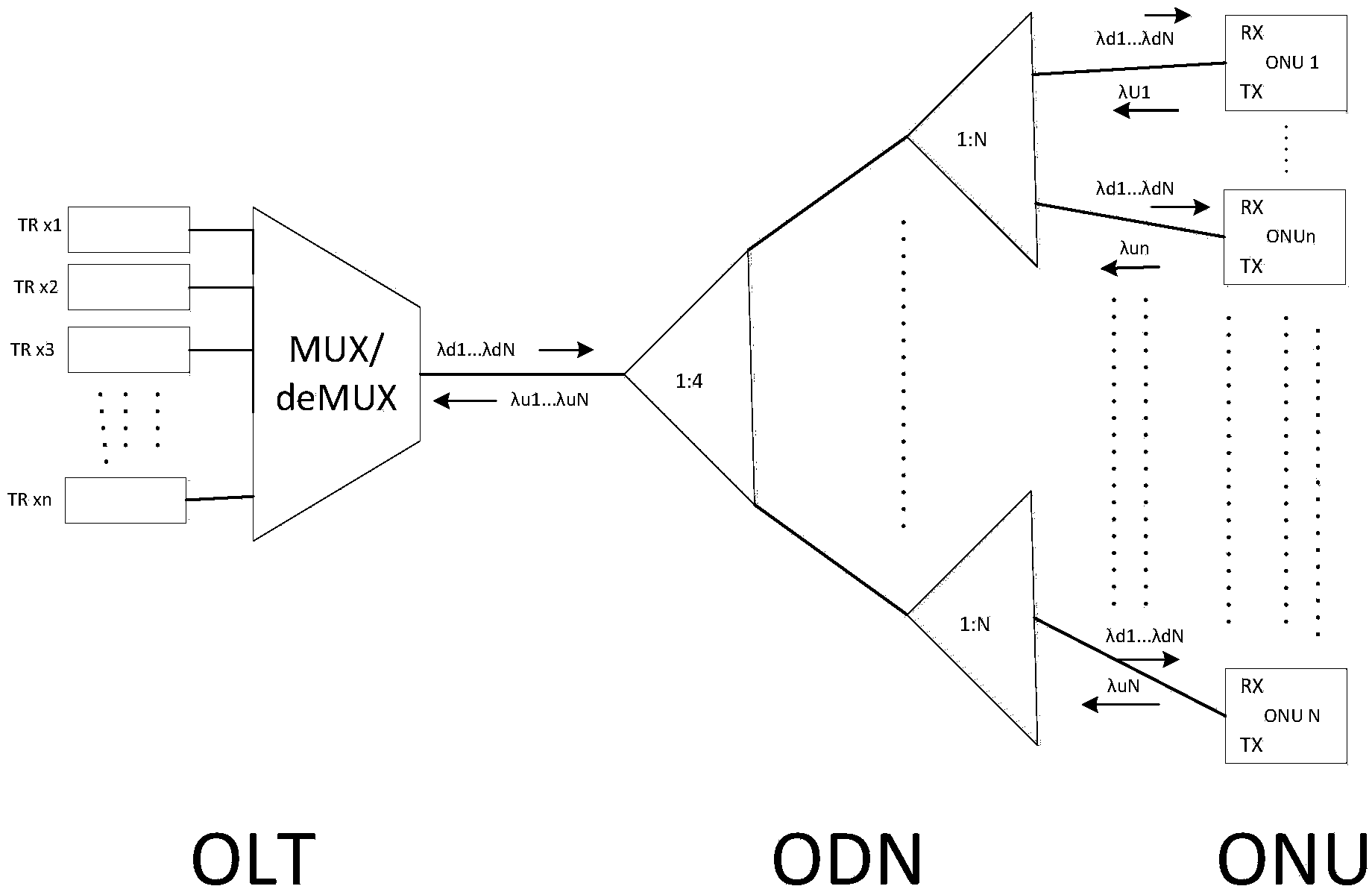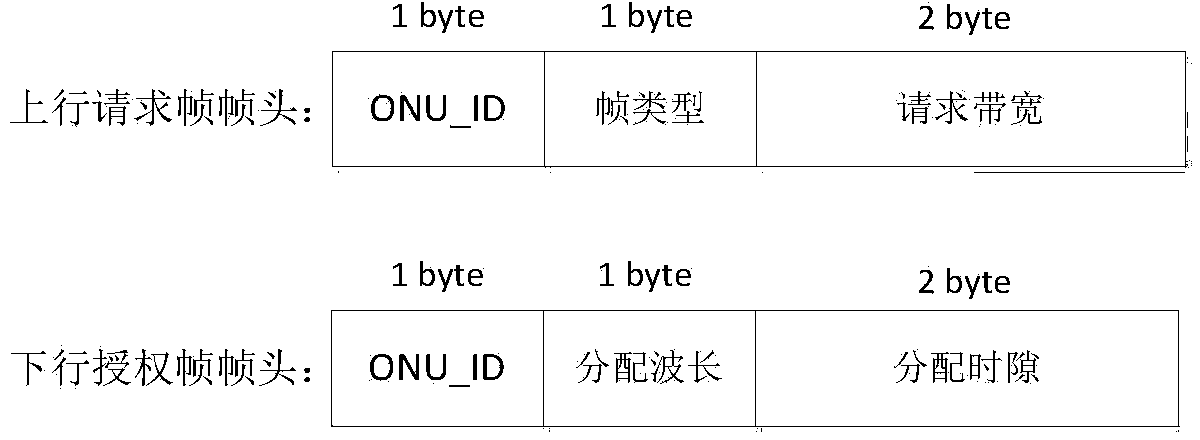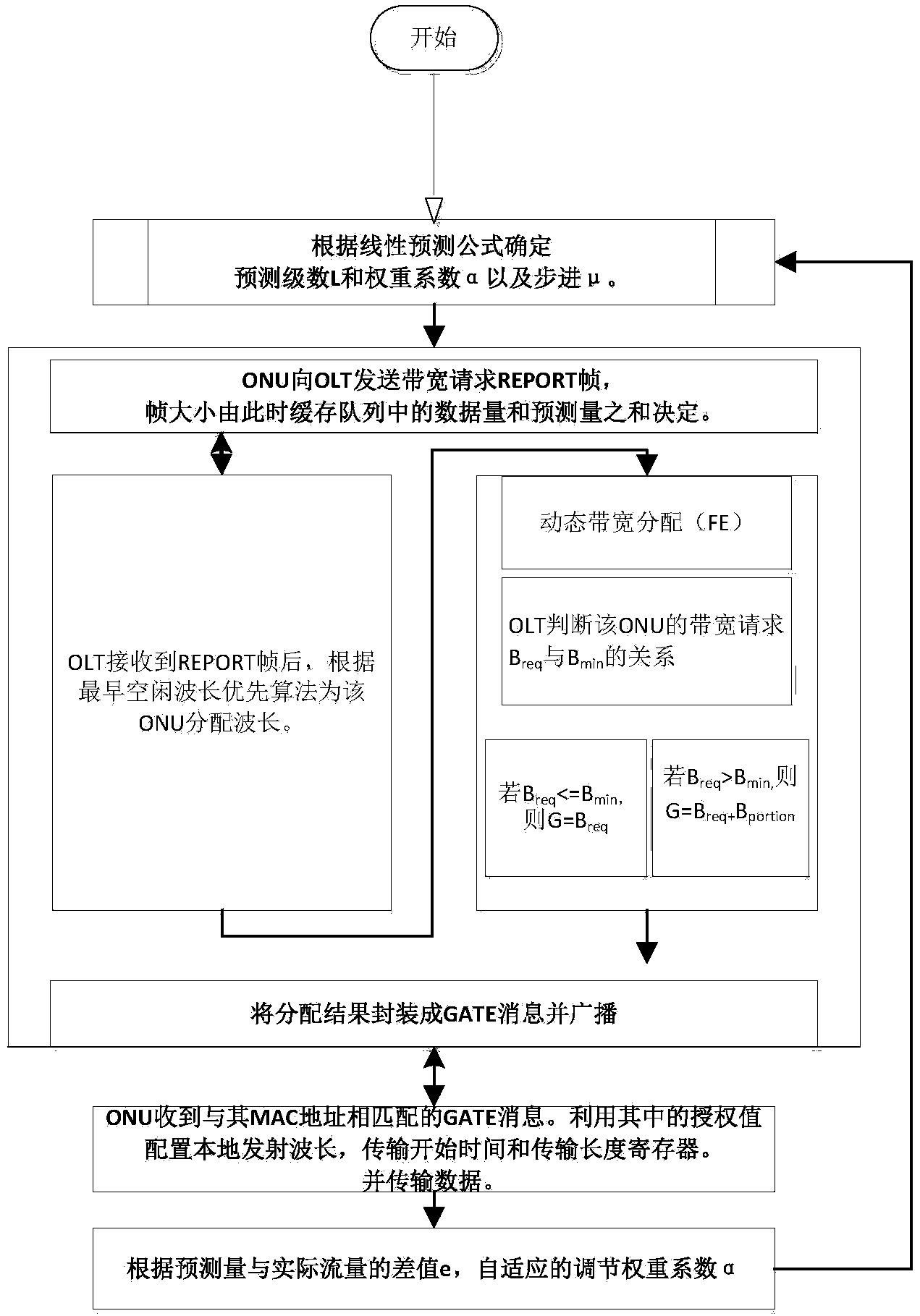Time and wavelength division multiplexed passive optical network resource allocation mechanism based on linear prediction
A time division wavelength division multiplexing, passive optical network technology, applied in the field of passive optical networks, can solve the problem of large end-to-end delay of data frames, and achieve the effect of reducing packet delay, avoiding improvement, and ensuring scientificity
- Summary
- Abstract
- Description
- Claims
- Application Information
AI Technical Summary
Problems solved by technology
Method used
Image
Examples
Embodiment Construction
[0020] In order to make the object, technical solution and advantages of the present invention clearer, the present invention will be further described in detail below. The system resource allocation mechanism algorithm based on flow prediction in the TWDM-PON system of the embodiment of the present invention comprises the following steps:
[0021] Step 1: The ONU sends a REPORT frame up in its own polling period, and the frame header contains the size of the buffered data in the buffer at this time.
[0022] Step 2: After receiving the REPORT frame, the OLT executes the following prediction algorithm to predict its traffic.
[0023]
[0024] where α is the adaptive weight coefficient, and L determines the prediction bandwidth determined by the previous "several" observations. The weight coefficient is calculated by the least mean algorithm (LMS):
[0025] α i , j ( ...
PUM
 Login to View More
Login to View More Abstract
Description
Claims
Application Information
 Login to View More
Login to View More - R&D
- Intellectual Property
- Life Sciences
- Materials
- Tech Scout
- Unparalleled Data Quality
- Higher Quality Content
- 60% Fewer Hallucinations
Browse by: Latest US Patents, China's latest patents, Technical Efficacy Thesaurus, Application Domain, Technology Topic, Popular Technical Reports.
© 2025 PatSnap. All rights reserved.Legal|Privacy policy|Modern Slavery Act Transparency Statement|Sitemap|About US| Contact US: help@patsnap.com



